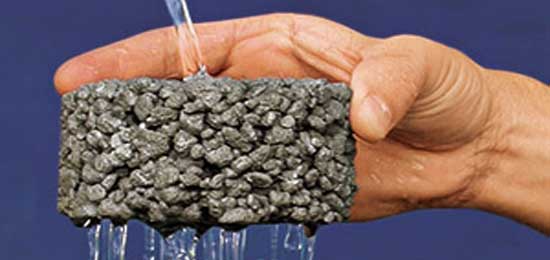
The no-fines concrete consists of cement, coarse aggregate and water. Thus the fine aggregate or sand is eliminated and such concrete has been adopted for cast-in-situ external load bearing walls of single and multi-storey houses, small retaining walls, damp-proofing sub-base material, etc.
Advantages of no-fines concrete
Following are the advantages of no-fines concrete:
- As compared to the conventional concrete, the drying shrinkage of no-fines concrete is relatively low.
- As there is absence of capillary passages, there is no transmission of water by capillary action.
- It is a type of lightweight concrete and hence it grants the advantages associated with the lightweight concrete construction.
- It possesses better insulating characteristics than conventional concrete because of the presence of large voids.
- There is direct saving in material requirements as no-fines concrete doesn’t require sand which results in considerable saving of cement per m3 of concrete.
- The unit weight of no-fines concrete is about two-thirds of the unit weight of conventional concrete. Hence the pressure on formwork is greatly reduced. Also, the formwork need not be watertight and hence it is possible to use cheap formwork.
- As no-fines concrete doesn’t segregate, it can be dropped from a considerable height and placed in very high lifts.
Disadvantages of no-fines concrete
Following are the however the limitations of the no-fines concrete:
- As no-fines concrete has little or no cohesion in the fresh state, it requires long time for the removal of forms.
- It is highly permeable as compared to conventional concrete and hence the rendering of walls becomes essential. However, in certain cases, such as drainage layers in soils, the advantage of quality of high permeability of no-fines concrete can be taken.
The compressive, bond and flexural strength of no-fines concrete are considerably lower than those of conventional concrete. The use of reinforcement in no-fines concrete is generally not recommended. However, if reinforcement is to be used, it is to be coated with a thin layer of about 3mm thickness of cement paste so as to improve the bond characteristics and also to improve the resistance to corrosion.

